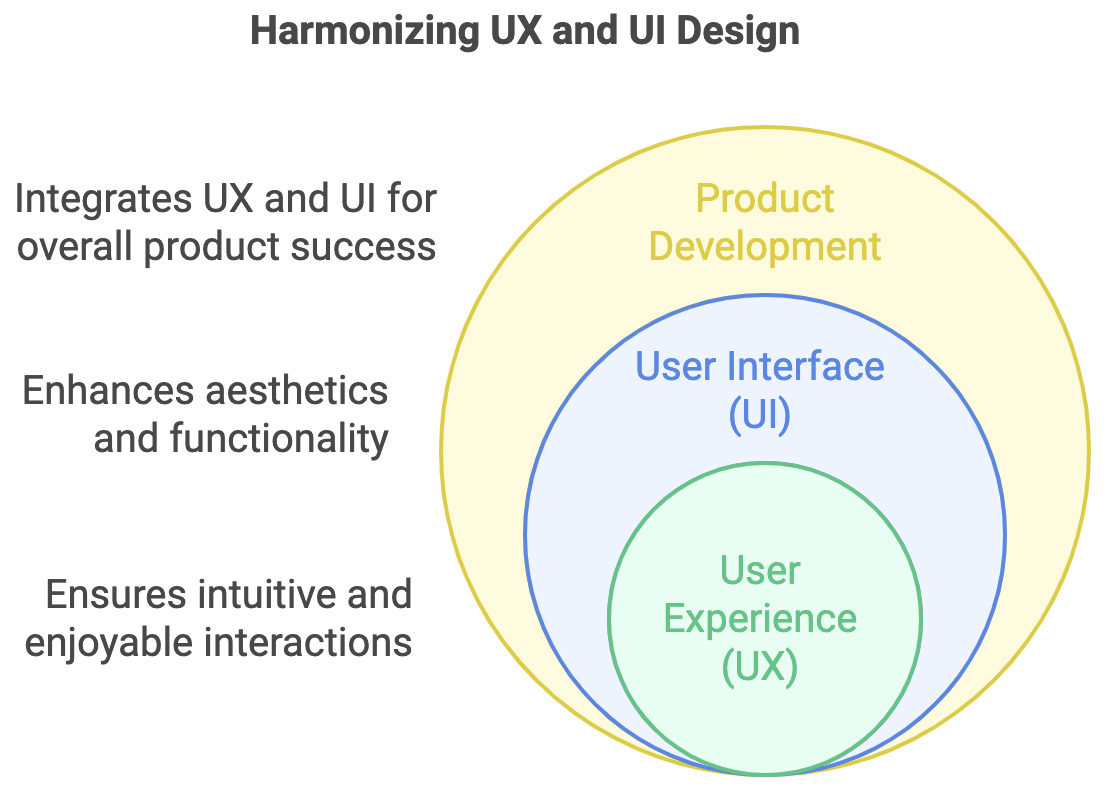Introduction
In the design world, UX (User Experience) and UI (User Interface) are often mentioned together, yet they represent distinct roles and responsibilities. While both are crucial for creating exceptional digital products, understanding their differences is key to successful design projects. Let’s break down the primary distinctions between UX and UI design.

1. What is UX Design?
User Experience (UX) design focuses on the overall feel and functionality of a product. It’s about understanding user needs and creating seamless, intuitive, and enjoyable interactions.
Key Responsibilities of UX Designers:
- Conducting user research and testing
- Developing user personas and journey maps
- Creating wireframes and prototypes
- Ensuring the product meets user needs effectively
Goal: To enhance usability and provide a satisfying experience.
2. What is UI Design?
User Interface (UI) design deals with the product’s visual and interactive elements. It focuses on how the product looks and feels, ensuring it’s aesthetically pleasing and functional.
- Key Responsibilities of UI Designers:
- Designing layouts, buttons, and menus
- Choosing color schemes, typography, and imagery
- Ensuring visual consistency across all screens
- Creating interactive elements for user engagement
Goal: To create visually appealing interfaces that align with the product’s purpose.
3. Key Differences Between UX and UI
While UX and UI are interconnected, they differ in their focus:
- Scope: UX addresses the overall user journey; UI focuses on specific visual and interactive elements.
- Process: UX involves research, strategy, and testing; UI revolves around visual design and aesthetics.
- Outcome: UX ensures functionality and user satisfaction; UI ensures the product’s look aligns with its usability.
4. How UX and UI Work Together
Despite their differences, UX and UI are interdependent. A well-designed UX won’t shine without a polished UI, and vice versa. Together, they create a cohesive product that’s both functional and visually engaging.
5. Choosing a Career in UX or UI
If you enjoy problem-solving and research, UX might be your path. If you have a passion for visual design and creativity, UI could be your calling. Both roles offer opportunities to make a meaningful impact in the design field.
Conclusion
UX and UI design are two sides of the same coin, each playing a vital role in the success of digital products. Understanding their differences and how they complement each other helps teams create exceptional user experiences. Whether you’re a designer or a business owner, appreciating these distinctions ensures better collaboration and outcomes.



I truly appreciate this post. I have been looking everywhere for this! Thank goodness I found it on Bing. You have made my day! Thx again
Great awesome things here. I?¦m very glad to look your article. Thank you a lot and i’m looking ahead to contact you. Will you kindly drop me a mail?